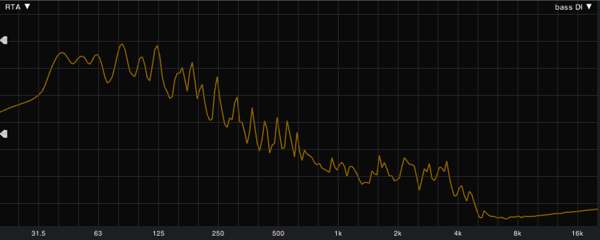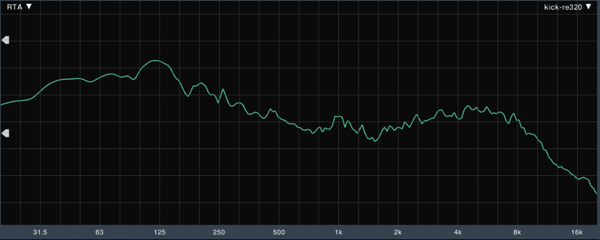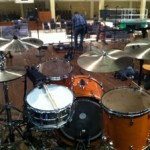
Just Turn It Up?
EQ is a powerful and fundamental mixing tool, however, it’s not always the right tool. Over the years I’ve seen a lot of interesting EQ choices made. I’ve even made some interesting ones myself. But sometimes there’s actually a simpler solution: just turn the input up.
So let’s look at some examples of some RTA measurements of a few instruments from a recent rehearsal. These were captured with the RTA average set to 10 seconds so that we can get a good idea of the frequency space the instrument actually occupies in its native form. These captures are direct off the input so with no EQ, compression, or other tricks applied.

In the capture above we have a bass guitar plugged into a DI. This is a pretty typical looking bass guitar captured from a quality source. What’s interesting to me is I often see engineers boosting low end on bass guitars. When you look at this measurement, do you get the impression this bass is lacking low end?
When an instrument is seemingly lacking in frequency content one would assume to be a natural component, sometimes simply turning the input up in the mix is a better solution than reaching for an EQ. This is one of the reasons why it’s always a good idea to get something up to it’s mix level before you even think about reaching for an EQ.
If anything, maybe this bass could use a reduction in low frequencies to balance them a little more with the mids. Maybe a little boost in the mids or upper-mids would generate the same result and be more appropriate to help with note definition in the bass by bringing out the upper harmonics. We would have to hear it for real to actually make that decision.
Let’s look at another example.

Here’s a kick drum mic’ed with an EV RE320 about half-in and half-out of the hole of a kick drum. The mic has the “kick” setting filter applied, but otherwise there’s no channel EQ applied. I also performed a measurement on a Shure Beta 91 and had a very similar response so this is probably a typical measurement for a decent kick input.
Looking at this measurement, which part of the frequency spectrum seems to have the most power? And what frequencies do we engineers love to boost in a kick drum? I know I’m quite guilty myself and plan to continue that streak, but maybe before jacking up that low end EQ to get a little more chest-thump, it’s a better idea to just turn the input up.
Is this making sense?
One thing I want to say about these measurements, though, is that these are simply intended to give you an idea of what an instrument’s frequency content might be when you first push the fader up. The examples above all ended up getting some EQ to help with some little tonal and taste things in the mix. But my point is that sometimes the mix-by-numbers EQ knobs you might reach for aren’t the best first step.
Now, here’s a minor tangent but while we have these nice visual aids for what a couple instruments often arrive at our consoles as, I want you to think about something. Do you ever have trouble getting your kick drum and bass guitar to play nicely in a mix? Ever wonder why this can be a challenge?
Take a look at the frequency responses again. If we were to lay these on top of each other, where do you see overlap? When we have too much overlap generally one instrument will win(the loudest) and mask the other or we just get an undefined mess. You easily see here that bass and kick often occupy the same frequency space in their fundamental frequency ranges. Perhaps a strategic cut or two are in order….
These are just some things to think about next time you’re listening behind a console.

 Previous Post
Previous Post Next Post
Next Post



Good article Dave. I know I’ve had to really push it on our sound volunteers to make sure we aren’t just cranking up the low end on the bass and kick. Sometimes people think they have them both set properly because we have an overall low end sound coming through the subs, but really it’s just the bass, or the kick that is coming out. I’ve taught them to cut the bass where you want the kick to shine through (I like the 50hz range for kick) and then cut the kick where you want the bass the shine through (which for me is around the 80-100hz mark). They’ve been amazed at the results and how it helps define the low end so much more.
Yes! I find this true of guitars a lot. It’s already common for church mixes to have quiet guitars, and usually butchered EQ. More often than not it just needs to be louder. Great thoughts, Dave!
Great words Dave. I love this novel concept of listening to our mixes vs. looking at them…
This serves as a great reminder to try and use less EQ if possible to avoid creating more problems than you’re “solving.”